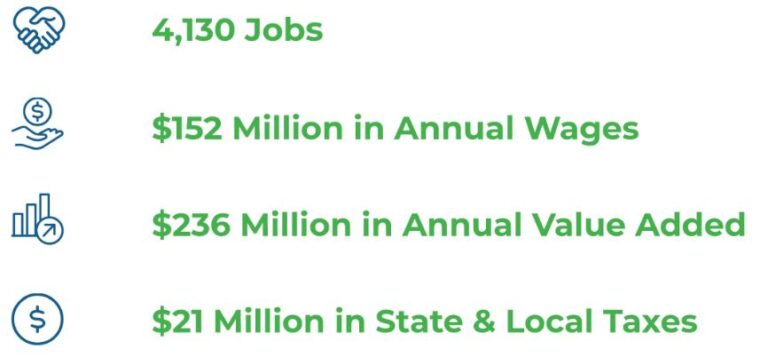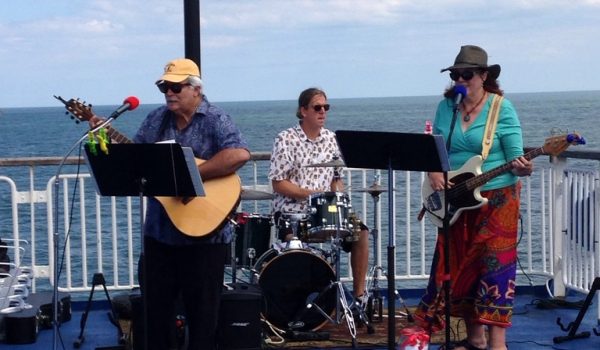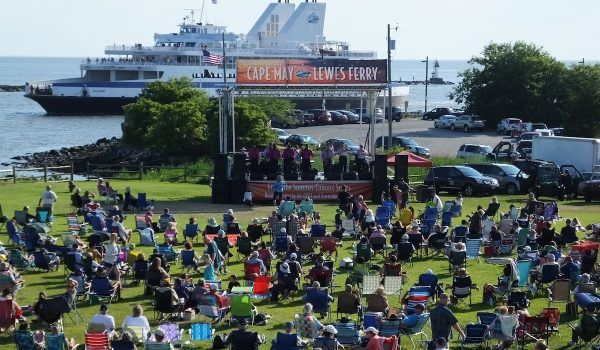The Economic Impact of the Cape May-Lewes Ferry
In 2019, the Delaware River & Bay Authority (DRBA) retained an independent consulting group to take an objective look at the economic impact of the Cape May-Lewes Ferry on the local economies of South Jersey and Southern Delaware, the areas directly served by the ferry system. In a recent presentation to the DRBA Board of Commissioners, the study found that the Ferry has a strong, positive impact on both sides of the Delaware Bay. Data showed that every dollar of net expenditure on the Ferry System stimulates twenty dollars of economic activity — a remarkable multiplier effect.
Every $1 invested in the Ferry stimulates $20 of economic activity.
The Ferry’s impact on the region was studied from several angles including tax revenue, tourism expenditures and local infrastructure support. The final analysis shows that the Ferry has a unique and extremely positive impact on the area.
Carrying more than a quarter of a million cars and three-quarters of a million people in a typical year, the Ferry System promotes tourism, trade and economic development. This role is even more important since the COVID-19 pandemic, as the Ferry continued to operate as an essential service helping move goods, essential services and the people who provided those services to military, health care and commercial posts.
Study Findings
By facilitating people moving into and through the region, the Ferry accounts for:

The economic effects are even more remarkable when you take into consideration that the Cape May-Lewes Ferry operates as an independent service of the Delaware River & Bay Authority without any taxpayer support. The Ferry is funded from ticket sales, concessions, and investments made by the DRBA from other service units. In addition to the Ferry, the DRBA operates the Delaware Memorial Bridge and five regional airports, all critically important arteries for Mid-Atlantic commerce.
Almost all passengers stop to engage with local businesses either before or after being on the Ferry.
Future phases of the study will look at additional benefits such as coastal property values, the tourism value of the Ferry as an attraction, and the value of reduced congestion on roads in addition to other economic factors, and value provided to other areas of the states. For instance, market research data shows that Atlantic City is one of the top 5 areas Ferry passengers visit after departing the Ferry, and expenditures in Atlantic City were not part of the initial study.
Passengers Stop & Spend
In addition to the economic study, the Ferry has conducted monthly passenger surveys each year since 2015 to monitor passenger trends. This data shows that ferry passengers spend a minimum of $125 million annually at Delaware Beaches and $144 million annually at the South Jersey Shore towns between Cape May and Atlantic City. Less than 1 in 20 passengers report driving through the area without stopping for something even if just for gas or take-out. To see some of the recent tourism data, click the button below.
Report Methodology
The results were arrived at using IMPLAN, a computer model widely used in economic-development studies across the United States. The method accounts for direct, indirect and induced impacts — or multiplier effects. Every direct expenditure in Ferry Operations leads to more spending by local businesses to support the traffic — or indirect effects — as well as local spending created by local workers — called induced effects.
The study uses DRBA audited financial reports to determine the inputs required to run the Ferry system. It then uses the IMPLAN model to determine the outputs or value the Ferry Service provides to local area economies. These types of studies are commonly used by regional and state planners to help in area development discussions.
In line with similar reports done on seasonal tourism regions including ones done for Coastal Delaware and New Jersey, the data is reported annually as seasonal operations create economic value all year long. For instance, businesses upgrade in low season with funds created in high season, and both full- and part-time employees spend year-round with funds earned or saved during high season work.
Study Consultants
The Power of Twenty Study was conducted by Council Fire, LLC, a certified “B” Corporation based in Annapolis, MD. Their expertise spans a wide array of industries and market sectors with extensive experience in transportation systems, natural resource and oceans management, energy infrastructure and development and water management. Lead economist Michael Shuman, is renowned in the field of local, community-based economic growth initiatives. His most recent book published by Penguin Random House is Put Your Money Where Your Life Is.
Upcoming Events

Cruise with Santa

Lucky 7 Hard Rock Casino

Cape May Zoo Excursion

Sunday Jamz Cruises

Brewery Shuttle Excursions: Cape May

Rock the Boat | Summer 2026

Grain’s Rocking The Docks: Waterfront Concerts in Lewes

Wednesday Night Concert Series: Cape May

